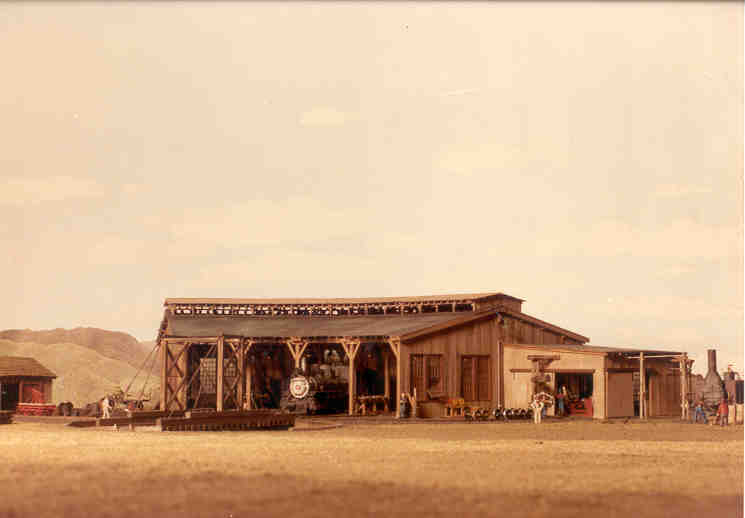
Where the Lenzen Roundhouse was constructed with brick walls, I chose to use wood because I was after a more backwoods feel. The attached machine shop uses Campbell's corrugated siding cut to scale-sized sheets and individually applied.
The Roundhouse
This is another model created in the early 1980's for my freelance HOn3 layout. The design is from a variety of sources, but primarily from trips to the Southern Pacific Lenzen Roundhouse in San Jose, CA. That structure has now been dismantled, but is slated to be reassembled at the new Santa Clara County Railroad Museum. Other sources include the Model Railroader Cyclopedia Volume 1, published by Kalmbach.
This was another eight-month project. All construction was board-by-board to get the subtle color differences only available with that method.

Where the Lenzen Roundhouse was constructed with brick
walls, I chose to use wood because I was after a more backwoods
feel. The attached machine shop uses Campbell's corrugated siding
cut to scale-sized sheets and individually applied.
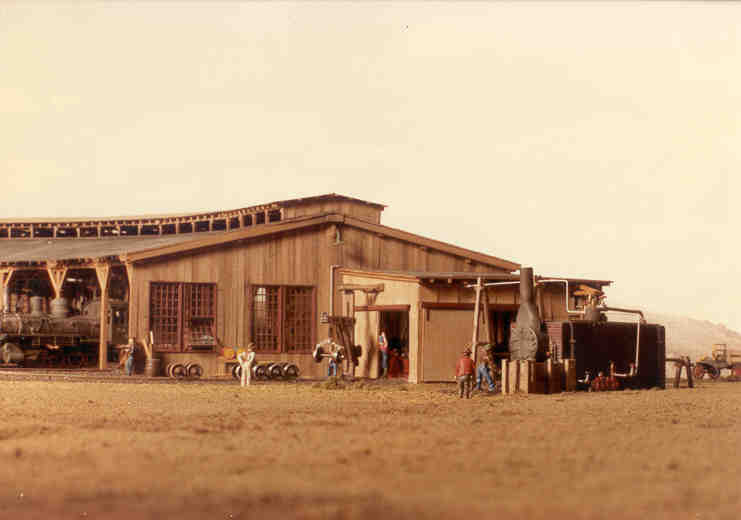
An external boiler feeds a horizontal steam engine, which powers
the overhead belt drive of the machine shop. Many commercial
castings were used, including the wheel crane, boiler, steam
engine, windows, and the machines themselves, as well as a
variety of tools scattered around.
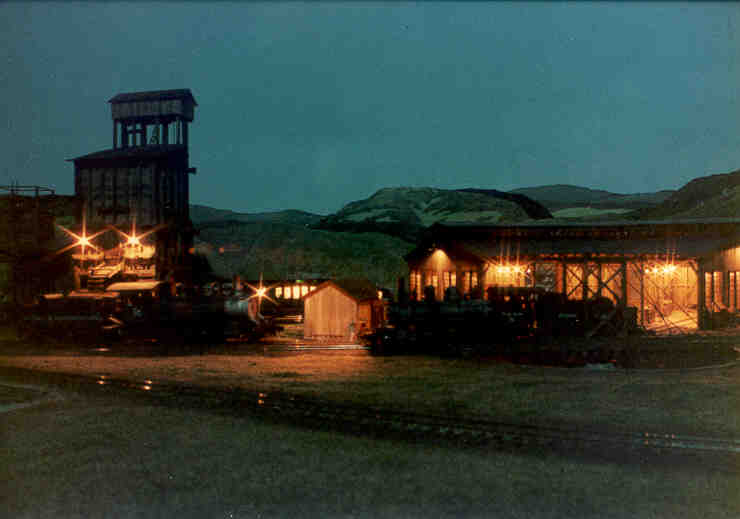
This photo was taken after the roundhouse had been installed in
the layout. Full working interior and exterior lighting was
installed using 1.5v grain-o-wheat bulbs. The coaling tower is a
modified Campbell's kit. The handcar shed was also a commercial
kit, as was the turntable.
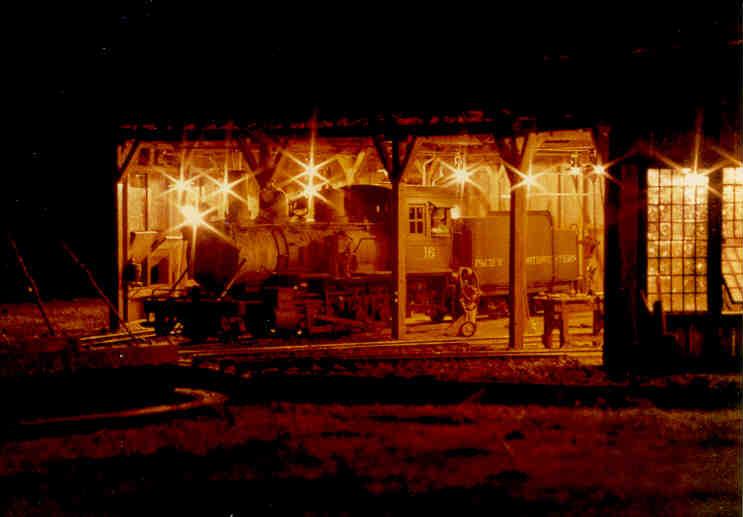
P&NW
No. 16
sits ready for her early morning freight run.
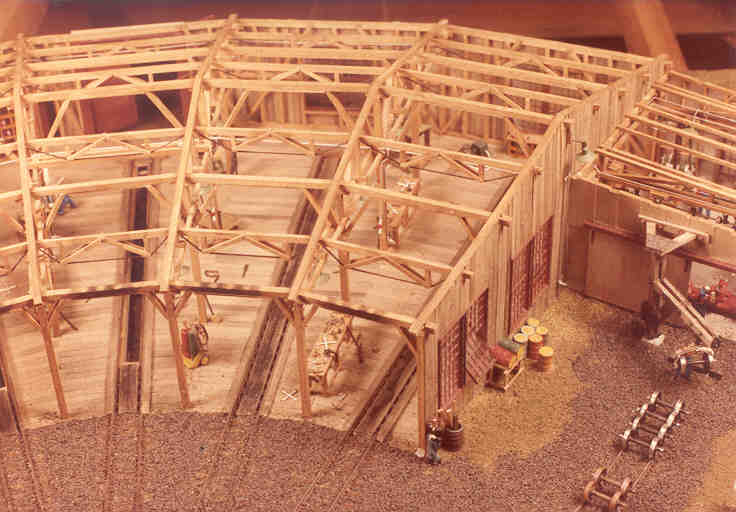
The roof bracing was as close to that employed on the Lenzen
Roundhouse
as I could duplicate. Two stalls have inspection pits, and all
are fitted with full steam and water plumbing. Work benches are
littered with tools.
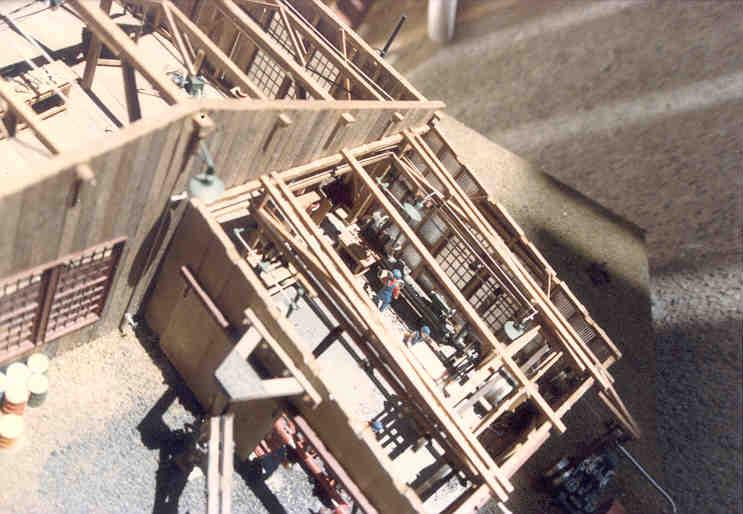
An overall shot of
the machine shop interior. It is equipped with a lathe, drill
press, band saw, end mill, and wheel-turning lathe. All machines
are belt-driven from the overhead system. The external horizontal
steam engine is visible at bottom-right.
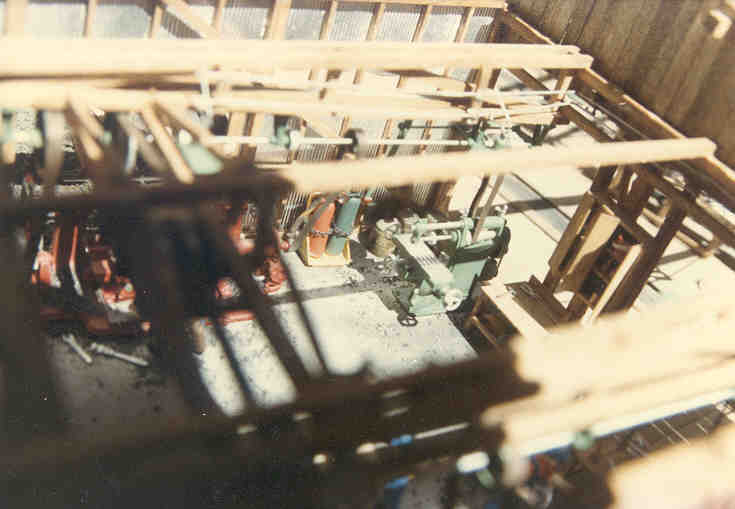
This view looks back into the roundhouse. Metal chips are
scattered on the floor around the end mill (center), lathe, and
wheel-turning lathe.
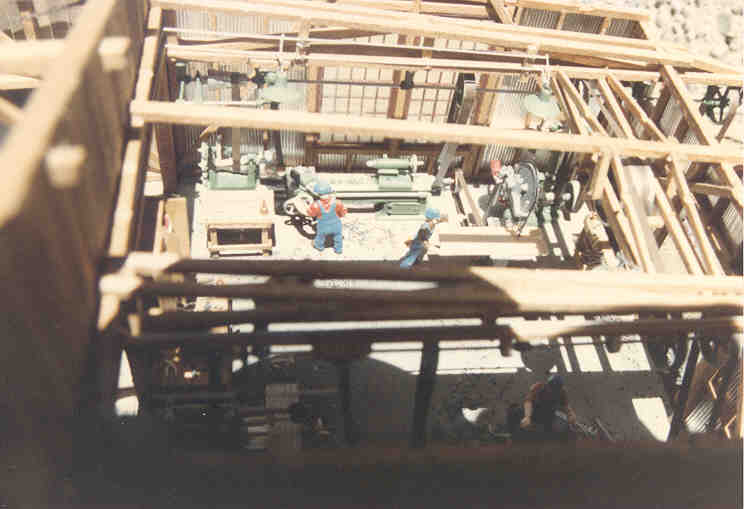
Looking towards the back wall, the lathe and band saw are
visible. Power transfer pulleys built into the roof at right get
power from the back wall to the front. The shop of the Sierra
Railway
in Jamestown provided inspiration and technical details. The
wheel-turning lathe operator is visible at bottom.
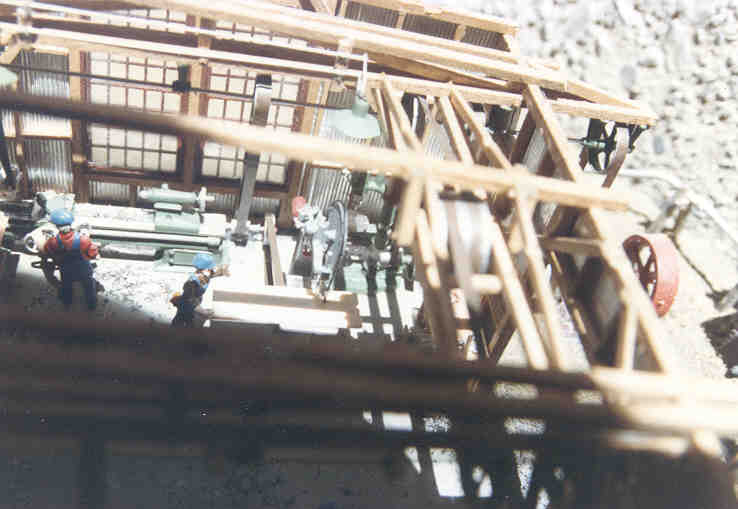
A sheet of plywood is being cut on the band saw. All light bulbs
throughout the structure were super-glued into brass shades. The
leads were then stripped, tinned, and formed into brackets. These
were then soldered to brass rod which actually supplied the
power. When painted silver, the brass rod simulates conduit. A
total of 30 lights are installed.